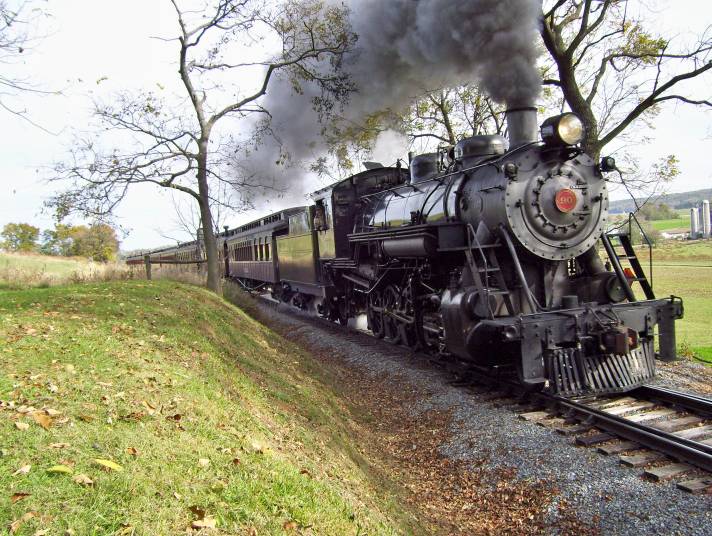 |
| Photograph of the "Bee" locomotive, built at Norris Locomotive Works in Lancaster, 1867 |
One of the joys of Civil War research is that any day artifacts can pop up on Ebay and send you on diverse and exciting research paths. Such was the case a couple days ago when a carte-de-visite photograph of a locomotive built in Lancaster showed up in my Ebay searches.
The photograph shows a locomotive named "Bee" and has a backmark identifying it as a product of the Norris Locomotive Works, Lancaster, PA. The locomotive's specifications -- "Cylinders, 20-In. Diameter, 26-In. Stroke, Driving Wheels, 48-In. Diameter" -- and the name of John A. Durgin, Constructor, also appear on the back. There is a reference in the Locomotive Engineers Journal of 1870 to the trading of photographs among different shops, so it seems plausible that this photograph was taken to showcase the work being done in Lancaster.
 |
| Backmark of photograph above "The Norris Locomotive Works, Lancaster, PA." |
The facility was located in the northeastern part of Lancaster City along the railroad on the northeast corner of Plum and Fulton Streets. By June 1865, the works produced one locomotive per week and employed 400 men in Lancaster. A map from 1866 exists in the collections of the Free Library of Philadelphia and shows the facility's six-acre layout with buildings labeled A-L that housed a machine shop, foundry, blacksmith, boiler shop, erecting shop, etc. An article in the June 20, 1866, Intelligencer describes all of these shops in detail.
A Lancaster boy, Henry C. Frazer (1850-1903), who apprenticed at the shop between 1865 and 1868 recalled that many of the locomotives produced in 1865 went into service on the Western Pacific Railroad in California (Railway and Locomotive Engineering, May 1902, p. 208). In 1866, John A. Durgin became Constructor and Superintendent, and the first ten-wheeled locomotives were produced in 1867 for the Pennsylvania and the Allegheny Valley Railroads.
Focusing on these two 2-10-0 "decapod" engines, the locomotives are interesting as prototypes in the first wave of "consolidation" engines that would successfully fill the role of hauling heavy freight. The two 2-10-0 Lancaster engines were the first of that configuration built in the United States and designed by Alexander Mitchell, who had perfected the design of the 2-8-0 engine in 1866. Other correspondents to the Railway and Locomotive Engineering journal provided additional details about the locomotives:
Alexander Mitchell tried to advance on the consolidation with two engines called the "Ant" and the "Bee," which had five pair of drivers connected and a pony truck in front. The engines gave some trouble on curves, so the back pair of drivers were taken out and a pair of small carrying wheels substituted, making the first of the 2-8-2 or Mikado type. Two engines were built by the Norris Locomotive Works, Lancaster, Pa., in 1867. Quite a number of this kind of engines is now used in mountain service. (p. 32, Railway and Locomotive Engineering, January 1907)Lancaster's locomotive works were closed again in October 1868, perhaps testifying to the volatility of industrial growth in the Civil War era. Surely, some of the returning veterans of the 79th Pennsylvania found employment there upon their return from the war in summer 1865.
The Bee appears to have gone into service on the Lehigh Valley Railroad and was modified in 1883 to a 2-8-2 configuration. The Bee's novelty attracted attention as railroad engineers reflected on their early days in professional journals in the early 1900s, and engravings from those journals document its appearance over the course of its lifetime.
 | |
|
 | ||
Engraving of "Bee" Locomotive
|











